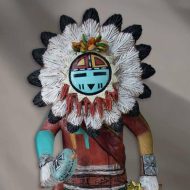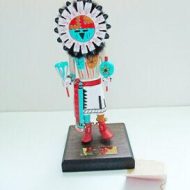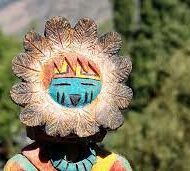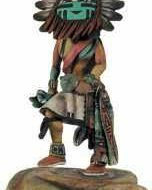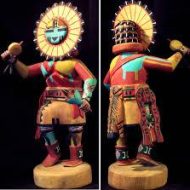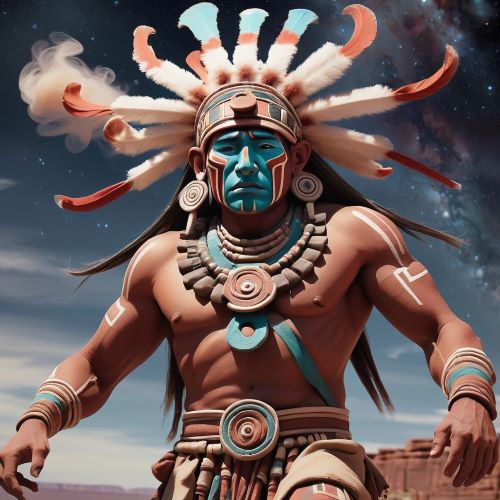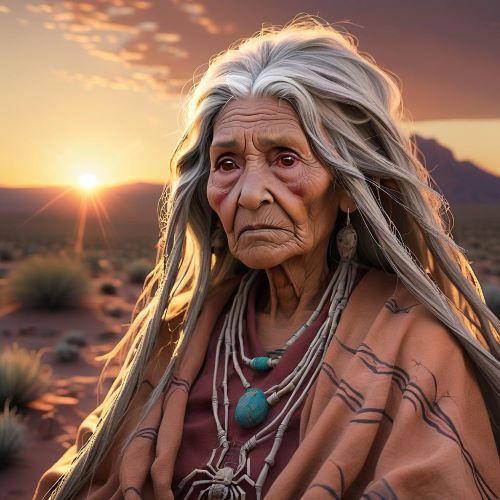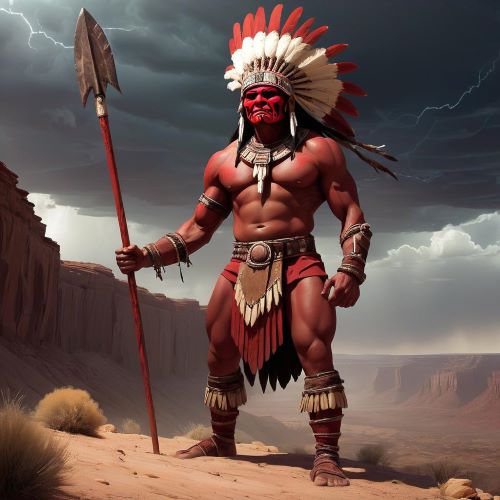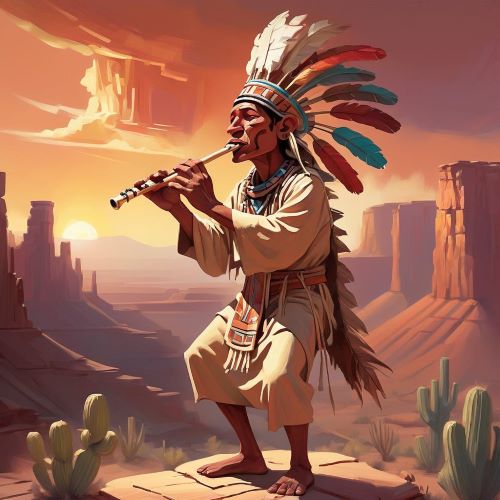Tawa: The Sun Spirit and Creator of the Hopi Universe
Listen
At a glance
| Description | |
|---|---|
| Origin | Hopi Mythology |
| Classification | Gods |
| Family Members | N/A |
| Region | United States of America |
| Associated With | Sun, Fourth World |
Tawa
Introduction
Tawa, the supreme Sun god of the Hopi people, serves as the cornerstone of Hopi cosmology and spiritual life, embodying the life-giving energy of the sun and the enduring creative force behind all existence. Central to nearly every Hopi creation story, Tawa is credited with forming the First World from the endless void known as Tokpella and remains intimately involved in the origins and ongoing life of the current world, identified as the Fourth World in Hopi belief. Unlike many mythic traditions in which the creator deity withdraws after the act of creation, Tawa’s presence is active and continued, permeating rituals, daily practices, and the very structure of Hopi society. The Hopi people look to Tawa not only as the creator but as an ever-watchful guide and protector, signifying the essential relationship between cosmic order, moral conduct, and the cycles of nature such as growth and fertility. Tawa’s benevolent power underpins Hopi agricultural success, community harmony, and the cyclical worldview that is central to their religious philosophy.
Physical Traits
Tawa sun god is typically depicted with powerful and recognizable imagery that invokes the essence of sunlight and cosmic energy. The most prominent feature is his round headdress, which mimics the form of the sun. This headdress is not merely decorative; it is meticulously crafted from high-quality eagle feathers, signifying strength, virility, and spiritual potency in Hopi culture. The center of Tawa’s mask often bears a disk with a blue or vivid coloration representing his face, which is generally carved with an expression of joy or bliss, underscoring Tawa’s benevolent and nurturing disposition. Such representations can be found in Hopi ceremonial costumes and kachina dances, where Tawa’s visage appears in ritual art and performance, serving as an enduring reminder of the vital source of all life and the happiness that the sun brings to the world.
Family
In Hopi cosmology, Tawa’s family delineates an intricate network of divine figures who collectively shape the spiritual and physical universe. Tawa sun god is revered as the supreme Sun Spirit and creator, sometimes known as the son of Manitou (also Manabozho), the Great Chief of the Anasazi gods, and Nowutset, daughter of the spider-goddess Susstinnako. His closest kin include his sister Pawa, who is often associated with the moon. Tawa, with Pawa, is charged by the Great Spirit (Gitche Manitou, also Tirawa) to sire Aste Hastin—the first man of Hopi mythology. A number of other significant mythical figures are attached to Tawa’s lineage, including Spider Woman (also known as Kokyangwuti or Spider Grandmother), who is alternatively cast as a co-creator, helper, or messenger, depending on the regional version of the myth. In some stories, Spider Woman’s role is that of shaping and animating life forms at Tawa’s direction, highlighting the interconnectedness and collaboration among the Hopi deities. The mythic genealogy extends to a host of related gods, cousins, sons, and relatives, each embodying further aspects of Hopi cosmology and the duality of life giving forces.
Other Names
Variation in Tawa’s name reflects both the diversity of the Hopi language and the syncretic influences of neighboring cultures. Among the Hopi, he may be known as Taiowa, Taawa, or occasionally Sun Shield Kachina; these variations are often associated with different mesa regions or dialectical differences within the Hopi community. In comparative mythology, Tawa is sometimes aligned with similar sun deities of other Native American traditions, with names such as Shakuru (Pawnee), Angpetu (Dakota), and Pautiwal (Hopi) appearing in broader narratives that seek to interweave stories across tribal boundaries. Regardless of the specific appellation, all of these names point back to the central notion of a creative Sun spirit whose benevolence and authority remain at the heart of cosmic order.
Powers and Abilities
Tawa’s powers exemplify his role as the supreme creator and life-giver. His paramount ability is the creation of the world itself, shaping the First World and all subsequent realms from primordial nothingness. Tawa’s dominion encompasses not only the creation of gods and life forms but also the cycles of fertility, agricultural growth, and the natural phenomena upon which the Hopi people depend. The sun’s influence, as channelled by Tawa, is essential for the ripening of corn and the sustenance of all living things. Tawa is also credited with the destruction and renewal of worlds, using cosmic floods to reset creation when its inhabitants stray from the intended moral path. In spiritual terms, Tawa acts as a source of wisdom, cosmic order, and moral guidance, instructing the Hopi through lessons embodied in myth and ritual. While some less traditional sources ascribe additional superhuman attributes—including invulnerability, rapid healing, and the conjuring of solar energies—these are largely interpretative embellishments rather than core Hopi beliefs.
Modern Day Influence
In contemporary Hopi society, the veneration of Tawa sun god is both visible and pervasive, manifesting in ceremonies, everyday practices, art, and oral storytelling. Tawa’s significance is especially evident in the blessing of newborns: Hopi mothers traditionally present their children to the rising sun, seeking Tawa’s favor and protection. No important Hopi ritual is considered complete without offerings, prayers, or dances honoring the Sun god’s role in prosperity and balance. Tawa’s image endures in modern Hopi art, particularly through the making of Sun Kachina dolls and ceremonial costumes, connecting current generations to their ancestral narratives. The guiding principles taught by Tawa—living in harmony with nature, revering the cycles of life, and upholding communal balance—remain central in Hopi agricultural practices and environmental stewardship. The symbolism of Tawa has also found its way into broader cultural and academic discourses, reinforcing the importance of indigenous spiritual frameworks and their relevance to ecological sustainability, ethical living, and cultural resilience.
Related Images
Frequently Asked Questions
What is Tawa in Hopi?
Most Hopi creation stories center around Tawa, the sun spirit. Tawa is the creator, and it was he who formed the “First World” out of Tokpella, or endless space, as well as its original inhabitants. It is still traditional for Hopi mothers to seek a blessing from the sun for their newborn children.
Who is the god of the sun in Hopi?
The sun god of the Hopi is known as Tawa and is one of the primary gods in the pantheon and the mythology of the native American tribe of the Hopi.
What does the Hopi sun symbol mean?
A symbol of creative and natural energy. The supreme god due to the Hopi’s dependence upon it for the growth of corn, and other sustaining crops. The sun symbol represents the heart of the cosmos and deals with vitality, growth, and passion.
What is the myth of Tawa?
Tawa, in the Hopi mythology, is the Sun spirit. Tawa created the world from nothingness, as well as all of the original gods.
What is tawa known for?
Tawa is known for being responsible for the life force of the world according to the Hopi people. New mothers even today offer their children to Tawa to ask for blessings.
Watch
Sources
Eyesofthepot.com. (2023, January 1). A Hopi Creation Story. Retrieved June 18, 2025, from https://www.eyesofthepot.com/history/hopi-creation-story.php
Adobe Gallery. (2025, January 1). Hopi Tawa (Sun) Katsina Doll, circa 1950s. Retrieved June 18, 2025, from https://www.adobegallery.com/art/hopi-tawa-sun-katsina-doll-circa-1950s
Wikipedia contributors. (2002, September 27). Hopi mythology. In Wikipedia, The Free Encyclopedia. Retrieved June 18, 2025, from https://en.wikipedia.org/wiki/Hopi_mythology
Encyclopedia.com. (2025, February 10). Spider Woman. Retrieved June 18, 2025, from https://www.encyclopedia.com/history/encyclopedias-almanacs-transcripts-and-maps/spider-woman
Waters, F., & Fredericks, O. W. B. (1977). Book of the Hopi. Penguin Books.
Fredericks, O. W. B. (1963). Book of the Hopi. Viking Press.
“Hopi mythology.” (n.d.). In Wikipedia. Retrieved from https://en.wikipedia.org/wiki/Hopi_mythology
“Tawa.” (2022, July 14). Brickthology. Retrieved from https://brickthology.com/2022/07/14/tawa/
OMNIKA Foundation. (2019, May 07). Tawa and Spider Woman Genesis. Retrieved from https://omnika.org/stable/142
“Hopi mythology Facts for Kids.” (2025, October 17). Kiddle. Retrieved from https://kids.kiddle.co/Hopi_mythology


